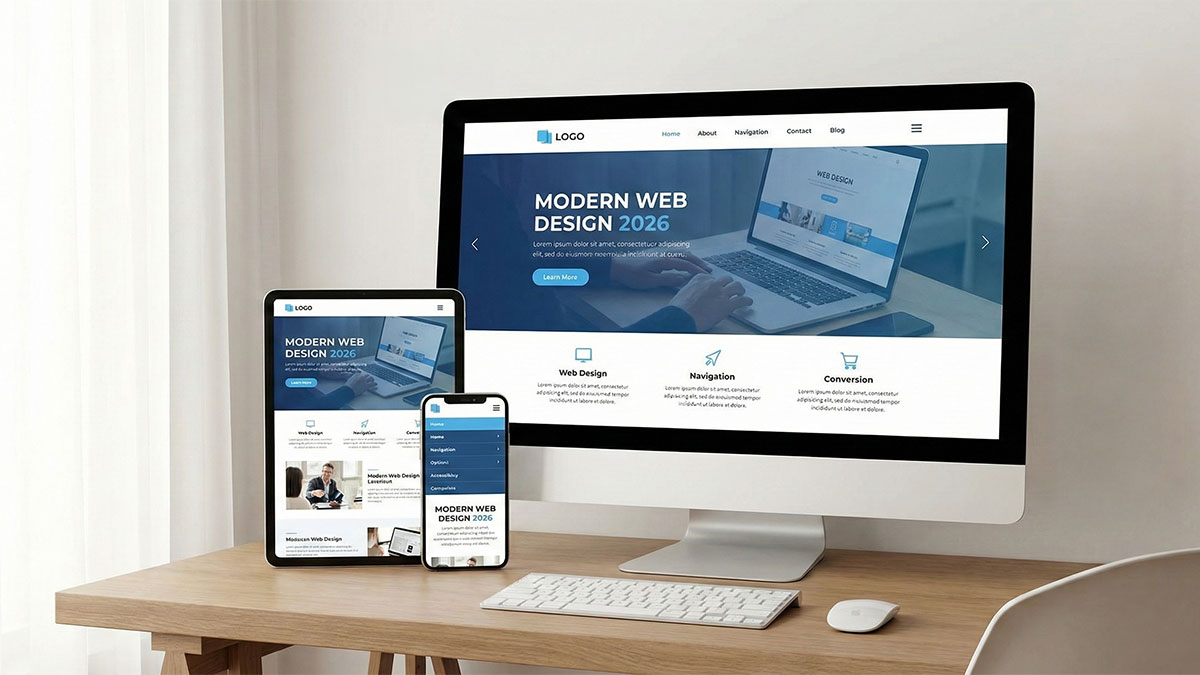What Negative Effects Does a Bad Website Design Have On My Business?
A well-designed website is crucial for any business aiming to establish a strong online presence. Good design not only attracts visitors but also keeps them engaged, leading to higher conversion rates and a better overall user experience. In fact, 72% say a poorly designed website affects their opinion of a business.
Let’s take a look at what constitutes bad website design, its negative effects on your business, and how it can impact your SEO efforts.
What Makes Bad Web Design?
Poor Navigation
Confusing or cluttered navigation frustrates users, making it hard for them to find the information they need. This often leads to high bounce rates as users quickly leave the site in search of better alternatives. 42% of people will leave a website because of its poor functionality.
Slow Load Times
Websites that load slowly lead to higher bounce rates. Users expect fast-loading pages, and if a site takes too long to load, they will leave. Slow load times also negatively impact user experience and can significantly hurt your SEO. Nearly 70% of consumers admit that page speed impacts their readiness to buy from an online retailer.
Non-Responsive Design
With the increasing use of mobile devices, a non-responsive design can alienate a large portion of potential customers. A website that doesn’t display properly on mobile devices will frustrate users and drive them away. 85% of adults expect a website to look as good on mobile as on desktop.
Outdated Design
An outdated design can make your website look old-fashioned and unprofessional. Users expect modern, clean designs, and an outdated website can lead them to question the credibility of your business.
Lack of Clear Call to Action (CTA)
A website without clear CTAs leaves users unsure of what action to take next. Effective CTAs guide users through the site and encourage them to take desired actions, such as making a purchase or signing up for a newsletter.
Negative Effects of Bad Web Design on Your Business
Increased Bounce Rates
Bad design elements like poor navigation and slow load times lead to users leaving the site quickly. High bounce rates indicate that users are not finding what they need or are dissatisfied with their experience, which can negatively impact overall website performance.
Lost Revenue
There is a direct connection between user experience and conversion rates. Poor design can lead to lost sales and revenue as frustrated users abandon their efforts to purchase or engage with your business.
Damaged Brand Reputation
A poorly designed website reflects badly on your brand, making it appear unprofessional and unreliable. This can erode customer trust and loyalty over time, damaging your brand’s reputation.
Reduced Traffic
User satisfaction plays a crucial role in driving repeat visits and referrals. A website that frustrates users will discourage them from returning, leading to reduced traffic and missed opportunities for engagement and sales. 88% of consumers said they are less likely to return to a website after a negative online experience.
SEO Implications of Bad Web Design
Poor User Experience (UX)
User experience is closely linked to search engine rankings. Bad UX sends negative signals to search engines, indicating that your site is not providing a good experience for visitors. This can lead to lower rankings and reduced visibility.
Lower Search Engine Rankings
Specific design issues, such as slow load times and high bounce rates, can lead to lower search engine rankings. Search engines prioritize websites that provide a good user experience, and bad design can significantly hinder your SEO efforts.
Decreased Crawlability
A poorly designed website can make it difficult for search engine crawlers to index your site properly. A well-structured site is essential for good SEO, and bad design can prevent crawlers from understanding and ranking your content effectively.
Ineffective On-Page SEO
Bad web design often leads to common on-page SEO mistakes, such as poor use of headers, lack of meta descriptions, and unoptimized images. These issues can hinder your SEO performance and make it harder for your site to rank well.
FAQs
Mobile users constitute a significant portion of web traffic. A non-responsive design can turn away potential customers and negatively impact SEO.
Slow load times lead to higher bounce rates, lower user satisfaction, and can hurt search engine rankings.
Common signs include a cluttered layout, poor navigation, inconsistent fonts and colors, lack of mobile optimization, and slow load times.
Regular website updates are crucial to maintain relevance and engagement. A site that hasn’t been updated in years can appear outdated and lose credibility.
Conclusion
Investing in good website design is essential for maintaining a strong online presence and achieving business success. Poor design can lead to lost revenue, reduced traffic, and damaged SEO efforts. Regularly auditing and updating your website design can help you avoid these pitfalls and ensure a positive user experience. If you’re unsure about the quality of your website design, consider seeking professional help to improve your site’s performance and credibility.
By understanding and addressing the negative impacts of bad website design, you can create a more effective and engaging online presence for your business.


